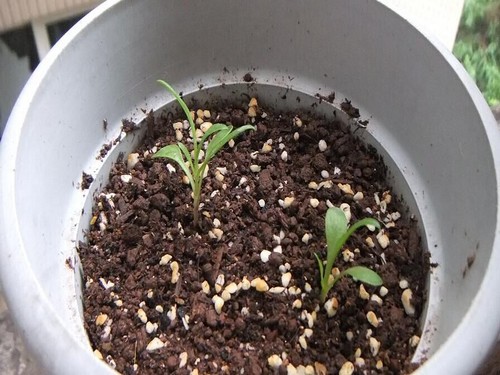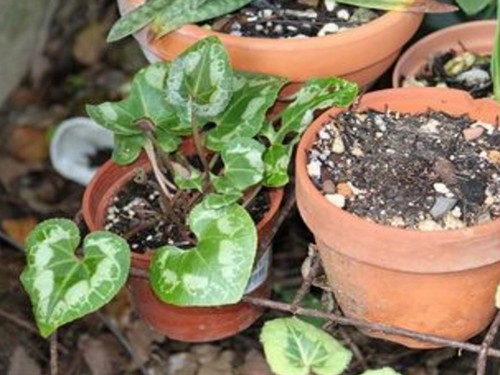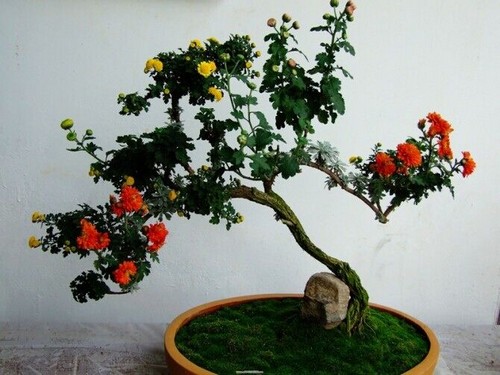How to grow cornflower? Planting method of cornflower
Cornflower is a kind of herb of Compositae, the stem is straight, the whole is white, branching from the middle section, the leaves grow into lanceolate, the basal leaves are generally pinnately lobed, the stems and leaves are not thin spider silk hair, the lower part is thin velvet. The top inflorescence is panicle or corymbose, the flowers are blue, light red, white, lavender and so on, purple and blue are more expensive, will send out a faint fragrance. This plant is mainly abundant in Europe, especially in the German countryside. It can be seen everywhere and is regarded as the national flower.

Some young girls will put the cornflower in their underwear to maintain their original shape, which means that she will soon be her partner, and the person blessed by this kind of flower will meet many dignitaries in this life, such as close friends, mentors and so on.
The main points of planting: sowing in spring and autumn, it is better to sow in autumn. Sowing in the prepared seedbed in the middle and late September, covering the soil with no seeds, slightly compacting, covering with grass and watering enough water, often keeping the soil moist and going to cover the grass after germination. When the seedlings have 6-7 leaflets, they can be transplanted or planted, the distance between the plants is about 30 cm, apply 5 times water of mature human feces and urine every 10 days or half a month after survival, and stop fertilization to wait for flowering in March of the following year. If potted, pot soil should be loose and fertile, it is best to use garden soil rotten leaves, plant ash and other mixed soil, when the seedlings have 6-7 leaves, the first transplant, dwarf seedlings into the tube basin, because the cornflower is a straight root system, large seedlings are not resistant to transplanting. It can be continuously buried in the soil in winter and taken out in early March. Fertilizing should be diligent and stop fertilizing when the bud appears.
Cultivation place: because the cornflower is native to European fields, it is slightly cold-resistant, cool and sunny.
Seedling cultivation: choose loose and fertile soil as bed, cover soil about 0.2 cm, cultivation: transplant when the leaves of seedlings reach 6 Mel 7, pot planting 1 plant every 13 mi 17 cm. After the seedlings survive after planting, pick the heart once, promote more branches, can blossom more, on the contrary, if there are too many branches, part of the lateral buds should be removed if necessary, larger flowers can be obtained. Because of taproot, it is appropriate to direct broadcast autumn sowing open field cover overwintering, early summer flowering, such as cold bed overwintering can blossom at the end of spring, spring sowing should be sown as soon as possible. It blossoms in June.
Use soil: prefer loose and fertile sandy loam with good drainage. The cultivated soil should be well drained and ventilated as far as possible. if the soil is sticky, it can be improved by mixing 40% snake sawdust or perlite. The soil quality should choose loose and fertile sandy soil with good drainage. The cultivated soil had better maintain good ventilation and facilitate drainage. If the soil is too sticky, it can be mixed with serpent sawdust or perlite with 30% Mel and 40% perlite.
Watering: watering once a day is enough in principle, but when it is drier in summer, it can be watered once in the morning and evening to keep the potted soil moist and reduce the temperature of potted plants, but avoid stagnant water. Generally, it only needs to be watered once a day to meet its needs, not often in hot and dry summer, watering once in the morning and evening respectively to meet the water demand, while cooling the soil, pay attention not to pour too much water to cause accumulation in the basin.
Fertilization: cornflower likes more fertilizer, and the three-element diluent should be applied once a month during the growth period. If the leaves are too luxuriant, the proportion of nitrogen fertilizer should be reduced, and more phosphorus and potassium fertilizer should be applied before flowering in order to get larger and beautiful flowers. Many plants need fertile soil, and cornflower is no exception. On average, three-element diluent is applied during the growing period. If the leaves grow well, the composition of nitrogen fertilizer can be reduced appropriately, and phosphorus and potassium fertilizer can be applied at the early stage of flowering to promote the growth of flowers.
Flowering management: cornflower can naturally send out lateral branches, if there are more lateral branches, the flowers are smaller, if necessary, part of the lateral buds can be removed, leaving only smaller branches, larger flowers can be obtained. Cornflower is a long-day plant, which has a short sunshine time in winter. if plant lamps are used to supplement lighting at night, it can blossom earlier. This plant grows lateral branches, which is not conducive to the growth of flowers, so it can properly remove unnecessary lateral buds and retain some of the branchlets so that the flowers can grow big and exuberant. As the cornflower needs long-term light, and the winter sun is insufficient, food lamps can be used to make up for the lack of sunlight and promote its flowering.
Cornflowers like sunny, cool climate, avoid hot summer, suitable for fertile and loose soil. Because of the straight root, it is suitable for live broadcast. Autumn sowing is early flowering, overwintering in a cold bed, and flowering at the end of spring. Cornflower is not tolerant to transplant, so it must bring soil mass when transplanting, otherwise it is not easy to slow down the seedlings. After the planting survived, the feces and urine of mature people with 5 times water were applied every 10 days or every month, and the fertilization was stopped in March of the following year to wait for flowering.
If potted, the potted soil should be loose and fertile, and the rotten leaves of garden soil, ash of plants and trees should be mixed with mixed soil. when the seedlings have 6-7 leaves, they should be transplanted for the first time; after growing, they should be changed to at least three pots, because the cornflower has a straight root system, and the big seedlings are not resistant to transplanting. It can be continuously buried in the soil in winter and taken out in early March. Fertilizing should be diligent and stop fertilizing when the bud appears.
Strong cold tolerance, can be planted in the open field in East China, North China must be covered to survive the winter; like fertile and loose soil; like sufficient sunshine; self-sowing; strong adaptability, easy to cultivate. When cultivating cut flowers, the greenhouse is usually used to promote flowers: sowing in August, planting in September, and producing flowers in February of the following year. The warm land in the customs is generally sown from August to September, the open field is covered with overwintering, it is planted in early spring of the following year, and blossoms in early summer. The northeast is sown in spring in the greenhouse. Because the root of cornflower is taproot and the lateral root is very few, so transplanting should bring soil into the seedling, and if the seedling is large, it is not easy to survive, so it is often direct seeded in spring. Cornflower can also be self-sowing and reproduce, in addition, cornflower likes close planting, otherwise it will grow poorly.
Cultivation points for attention:
Corn chrysanthemum is strong, cold-resistant, like sunshine, and requires fertile, loose, well-drained soil. It is generally broadcast in the seedbed in September and can be overwintered in the south of central China without cold protection in winter. It is transplanted in November or in early March of the following year. The autumn sowing seedlings in North China were transplanted once when they had 2 or 3 true leaves, moved forward to the sunny bed in winter, covered with cold protection in winter, and planted in the open field in the early spring of the following year. Base fertilizer should be applied before planting. Because the cornflower has a straight root system and is not resistant to transplantation, it is necessary to bring a larger soil mass when transplanting.
Chrysanthemum cornflower stem is thin and weak, easy to lodge, so the planting distance should not be too dense, to prevent the growth of too dense, poor ventilation and lodging. In the seedling stage, it is necessary to top and pick the heart to promote more branches and dwarf the plant, so that it blossoms more and the plant shape is beautiful. During the growing period, liquid fertilizer should be applied once every 20 days, but it should be noted that more nitrogen fertilizer should be applied, and more phosphorus and potassium fertilizer should be applied properly to make the stem firm and the flower color bright. At the same time, watering should be moderate, not too much, and we must pay attention to timely drainage in the rainy season, otherwise it will cause rotten roots and affect the normal growth of the plant.
Time: 2019-05-25 Click:
- Prev

Planting technique of cyclamen (method)
Cyclamen is a perennial bulb flower of Primulaceae. At present, it is cultivated for more than one year in potted flower production. Because of its wide variety, unique flower shape, bright color, long flowering period and Christmas, New Year's Day and Spring Festival, it is deeply loved by people and has become an enduring Lunar New year potted flower.
- Next

Planting techniques of potted Chrysanthemum
Chrysanthemums are cultivated all over the country, among which the famous ones are chrysanthemum from Anhui, Hangzhou white chrysanthemum from Zhejiang, Huai chrysanthemum from Henan, and Qi chrysanthemum from Hebei, which are important Chinese herbal medicines exported to Hong Kong, Macao and Taiwan. Chrysanthemums like warm and humid climates. Resistant to cold, flowers can withstand micro-frost. Underground roots and rhizomes can survive the winter in North China.
Related
- Fuxing push coffee new agricultural production and marketing class: lack of small-scale processing plants
- Jujube rice field leisure farm deep ploughing Yilan for five years to create a space for organic food and play
- Nongyu Farm-A trial of organic papaya for brave women with advanced technology
- Four points for attention in the prevention and control of diseases and insect pests of edible fungi
- How to add nutrient solution to Edible Fungi
- Is there any good way to control edible fungus mites?
- Open Inoculation Technology of Edible Fungi
- Is there any clever way to use fertilizer for edible fungus in winter?
- What agents are used to kill the pathogens of edible fungi in the mushroom shed?
- Rapid drying of Edible Fungi

